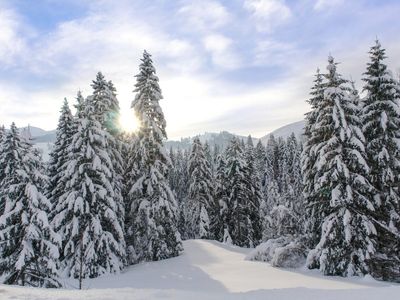Pine Trees in the Northeast
First, let’s clear something up. What’s the difference between a pine tree and a conifer? When we use the term “pine tree” or “evergreen,” we’re usually loosely talking about trees with needles that stay green all year — the traditional Christmas tree-style tree. These species also tend to produce pine cones, hence the name: coniferous. That being said, some of these trees actually are pine trees — those belong to the genus Pinus. Many are native to the northeastern US, and are perfect for landscape design. Some popular choices include:
Eastern White Pine – Can reach 80 feet (24 m.) tall with a 40 foot (12 m.) spread. It has long, blue-green needles and thrives in cold weather. Hardy in zones 3-7.Mugo Pine – Native to Europe, this pine is very fragrant. It is smaller in stature than its cousins — topping out at 20 feet tall (6 m.), it is available in compact cultivars as small as 1.5 feet (46 cm.). Hardy in zones 2-7.Red Pine – Also called Japanese Red Pine, this native of Asia has long, dark green needles and bark that naturally peels to reveal a distinctive, stunning shade of red. Hardy in zones 3b-7a.
Other Northeast Evergreen Trees
Conifers in northeast landscapes don’t have to be restricted to pine trees. Here are some other great northeast conifers:
Canadian Hemlock – A distant cousin of the pine, this tree is native to Eastern North America. It is capable of reaching a height of 70 feet (21 m.) with a spread of 25 feet (7.6 m.). Hardy in zones 3-8, though it may need some winter protection in very cold climates. Eastern Red Cedar – Native to eastern Canada and the US, this tree is also frequently called Eastern Juniper. It grows in a conical or even columnar habit. Hardy in zones 2-9.Larch – This is a strange one: a coniferous tree that loses its needles every fall. They always come back in the spring, however, along with tiny pink cones. Hardy in zones 2-6.
